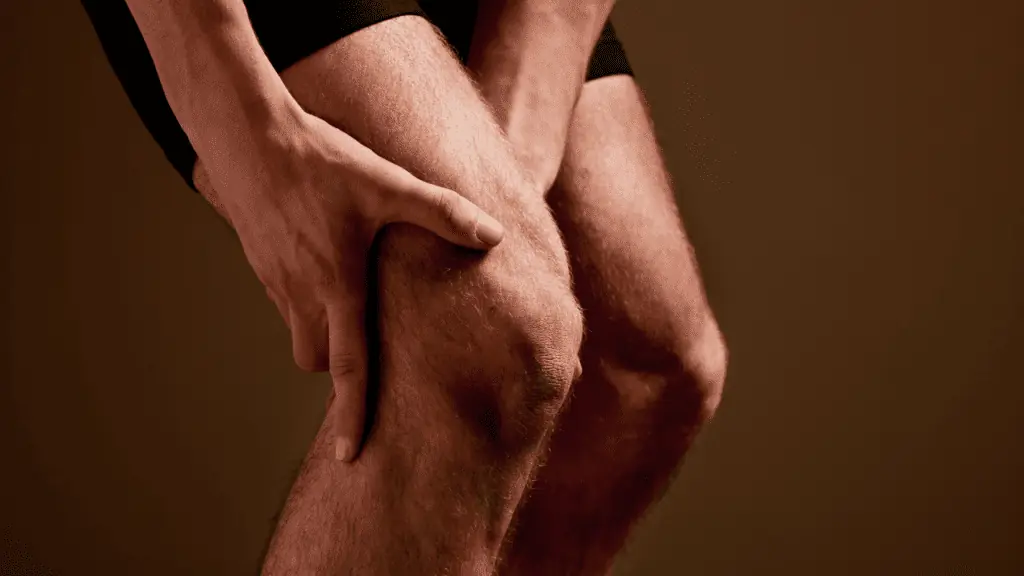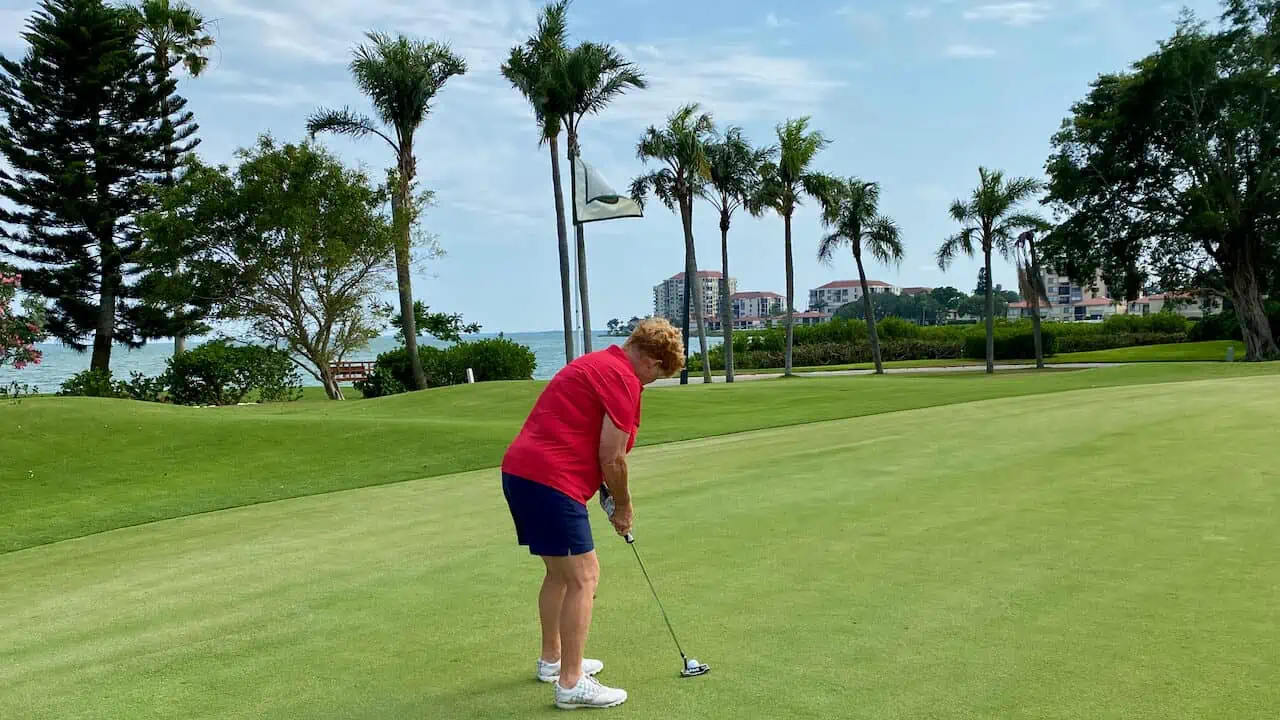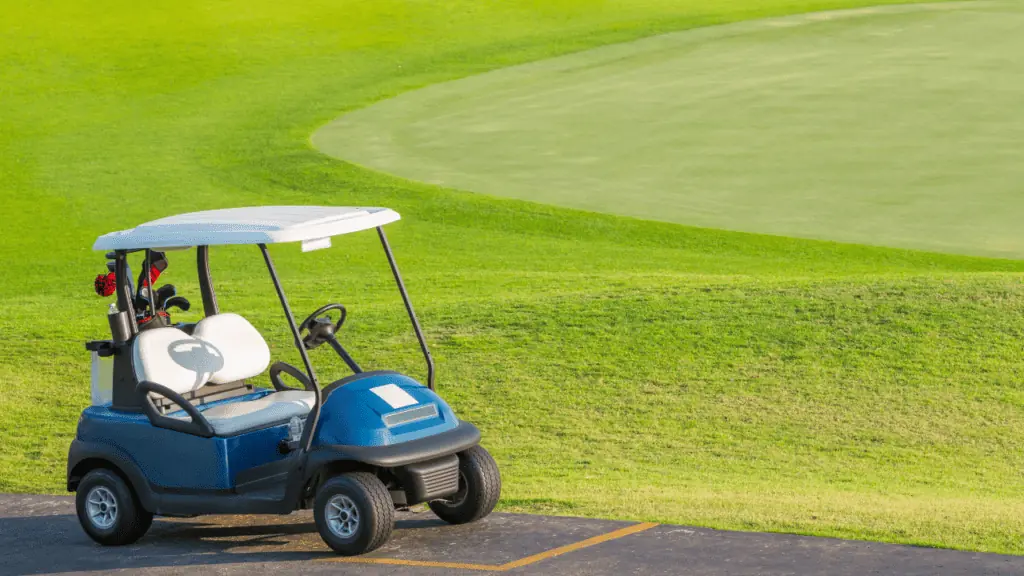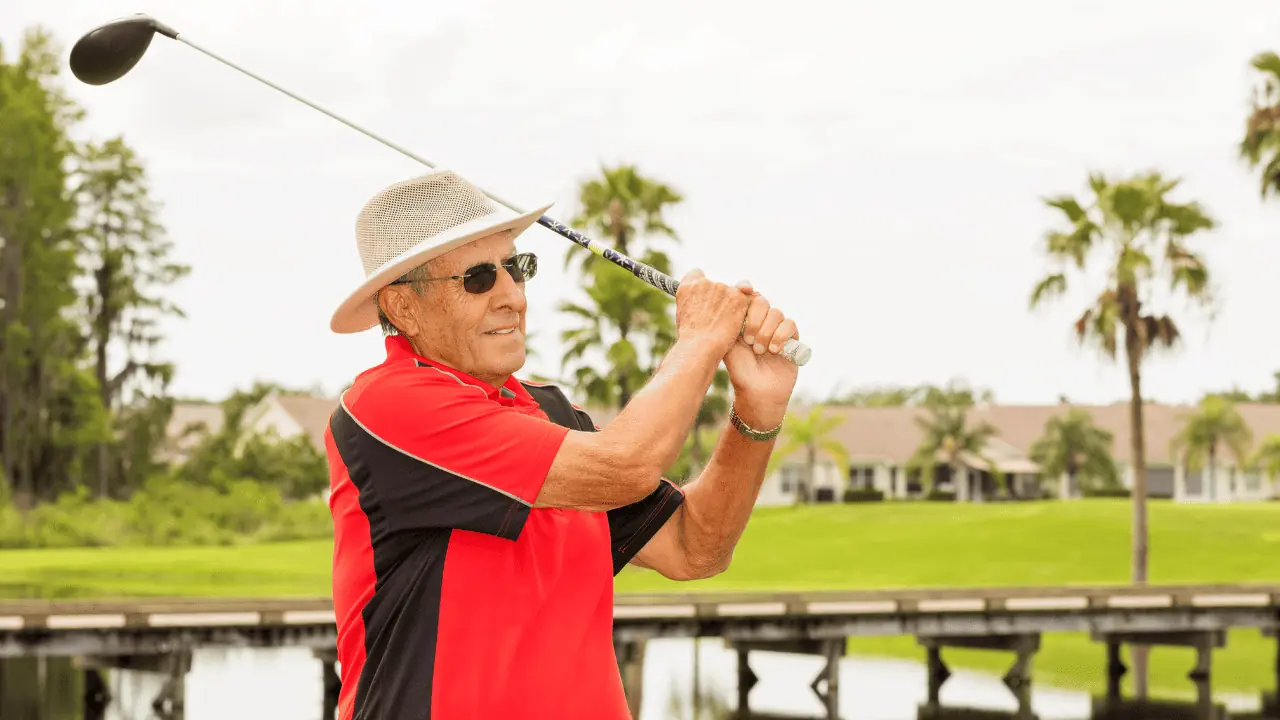Table of Contents
Our golf expert covers her professional tips related to golf after a knee replacement.
When I was teaching golf full-time, one of my students came to me and said she was going to have a knee replaced. I was kind of surprised as she was in great physical condition and never complained of any pain, but she had been quietly struggling for a long time.
I’m happy to report that she came back to golf able to get more distance, and she had so much less fatigue when finishing a round.
I couldn’t believe how fast the recovery time was, but there were certainly some things we did to help her transition into golf after knee replacement.
As always, consult with your doctor about when you can start playing golf again, but when you get the green light, this information should help!
⛳️ Related: Expert Guide to Golfing After a Hip Surgery
Can You Play Golf with a Knee Replacement?

Medical Disclaimer
DISCLAIMER: THIS WEBSITE DOES NOT PROVIDE MEDICAL ADVICE
The information, including but not limited to, text, graphics, images and other material contained on this website are for informational purposes only. No material on this site is intended to be a substitute for professional medical advice, diagnosis or treatment. Always seek the advice of your physician or other qualified health care provider with any questions you may have regarding a medical condition or treatment and before undertaking a new health care regimen, and never disregard professional medical advice or delay in seeking it because of something you have read on this website.
Depending on the success of your knee replacement surgery, your age, and your recovery process, you can play golf again anywhere from 3 to 10 months after a knee replacement. Golfers who work with a physical therapist often have quicker recovery times as they can work on mobility and healing at a faster pace.
The fastest I have seen a player back out on the course after a knee replacement was within 3 months for chipping and putting and about 4 months to take full swings.
Tips For Golf After Total Knee Replacement
As you return to golf after a knee joint replacement, make sure you are listening to your body. I know it’s difficult to walk away from the sport for a few months, but you will pick it back up quickly and likely play even better.
Some golfers try to time elective knee joint surgeries to off-season, especially if they live in colder climates. However, deciding if an orthopedic surgery can be delayed is best made with your doctor’s advice.
Here are some of my best tips that have worked on actual golfers after total knee replacement.
1. Start Slow

Start by chipping, pitching, and putting. Don’t attempt to take full swing until you feel strong enough and have clearance from your doctor. Let’s face it; the extra short game practice never hurt anyone!
When you have this down, move to some partial swings with short irons. Take your time to get up to the full driver swings.
2. Nine Holes

Don’t commit to 18 holes until you have been playing golf again for at least one month.
There is a big difference between 9 holes of golf and 18 holes of golf, and it’s not worth pushing it when you are still healing.
3. It’s Ok To Take A Ride

I love walking the course, but take a cart after a knee replacement surgery. Be careful when getting in and out of the golf cart, but enjoy the time off of your feet.
In a few months, when you feel stronger, get a great golf push cart and start walking 9 holes.
4. Don’t Push The Distance

Give up on hitting the ball far for a few months. Grab an extra golf club, forget about the fact that you lost yardage, and let your knee heal. Does it really matter if you hit the 7 iron or the 8 iron 150 yards? The key is to hit it close to the pin.
Also, move up a set of tees if you want; that’s what they are there for!
5. Lighter Golf Clubs Are A Must
Lightweight golf clubs take some pressure off the knees. The lighter clubs allow you to get more swing speed without adding extra torque to the knees.
6. Turn The Toes Out A Bit
I would suggest a more traditional golf swing (with toes turned out at setup) when playing golf after knee replacement. These more compact swings may create too much pressure. Instead, feel free to take a slightly wider turn where you move off the ball a bit.
You will likely release some pressure and feel more confident getting through the impact. Timing and tempo can take a little while here, but the bottom line is to not create too tight of a pivot that you stress your knee.
6. Invest In Good Shoes
A golf shoe with a very stable tread is essential after a knee replacement. You must ensure you are not slipping on wet turf but also that you feel stable and grounded when trying to take a full swing.
Golf After ACL Surgery
The transition back into golf after ACL surgery should be a bit easier than it is after a total knee replacement.
One of the most important aspects is to start slow. Don’t play more than 9 holes; always take a golf cart, and remember to ice things down after your round.
I would plan on taking about 5 to 10 yards off of most of your shots. Don’t let this bother you; your distance will come back; let the knee fully heal first. The last thing you want is to create a new injury or add knee pain.
Golf Professionals Who Have Had Total Knee Replacements
Golf professionals who play golf day in and day out do a lot of wear and tear to their knees. Over time, sometimes, the only way to deal with this is a knee replacement. Fred Funk, Peter Jacobsen, and Nancy Lopez are three well-known players who underwent knee replacement.
One of the most recent golf professionals to have a knee replacement surgery is John Daly. He had surgery at the end of 2022, and it will be interesting to see his return, and what it does to that driver distance he is so well known for.
Some professional golfers did this later in life to alleviate pain and still be able to enjoy a round of golf. Fred Funk still competed after having his knee replaced. If he can play at that level with a total knee replacement, you can get back out there!
Total Knee Replacement Surgery | A Patient’s Perspective
One of our readers at Senior Golf Source kindly offered to share his personal experience with two total knee replacement surgeries at age 66 and again at 67. Mr. Finkelstein’s golf handicap ranges between 9-10.
“I’ve had both knees replaced–about 10 months apart. My problem was never pain but stability. I tried everything before surgery–physical therapy, various types of injections including Synvisc, cortisone, other NSAIDs, and PRP. In the end, there wasn’t another choice.
– Jim Finkelstein, Washington DC
My surgeries were both toward the end of the season. To prepare, I did a lot of pre-hab to strengthen my quads and gluts. That was a key to my recovery. Then, I made PT my “job.” In both cases I had my full range of motion and extension back in less than 6 weeks.
Still, I wasn’t ready to play for another five months. It takes time for the implant to get set in the bone. Take it slow–pitching and putting, then maybe 9 holes but no driver. Ride, don’t walk–not because you can’t but uneven ground is not your friend for a while. But by early the next season I was able to walk 18 holes again!
A couple of pieces of advice. Interview more than one surgeon. Procedures and techniques have changed dramatically in recent years. For example, I have “custom” 3-D printed knees. Perhaps the best tip I can give is to get a massage table for home. It make doing physical therapy much easier. That was a key to my recovery. If at all possible, start with out patient PT immediately. It is much better since they have all the equipment that you don’t have at home. Finally, make certain to find a PT who plays golf!
Frequently Asked Questions
Here are a few of the most common questions about returning to golf post joint replacement surgery.
Has John Daly had a Knee Replacement?
Professional golfer, John Daly had knee surgery in late 2022. In 2023 he underwent rehabilitation with physical therapy and sports medicine to make a return to professional golf in some capacity.
What is the Most Common Knee Injury in Golf?
The most common knee injury in golf is a meniscus tear. If you haven’t already noticed, the golf swing has quite a bit of twisting, and if you twist with just a bit too much torque on the knee, it can result in injury.
How Is My Knee Affected During the Golf Swing?
The knee is an integral part of the golf swing. We use the knee to twist and to load up power. Your right knee also takes a lot of pressure through impact as you twist and push off this leg to gain power.
Final Thoughts on Golf After Knee Replacement
Ultimately you will talk to a board-certified orthopedic surgeon before returning to the golf course. The key to a successful return is a safe return; without additional injuries.
I hope my tips on golf after knee replacement will help you reduce stress, minimize knee pain and feel as though you have more fun on the golf course again.



